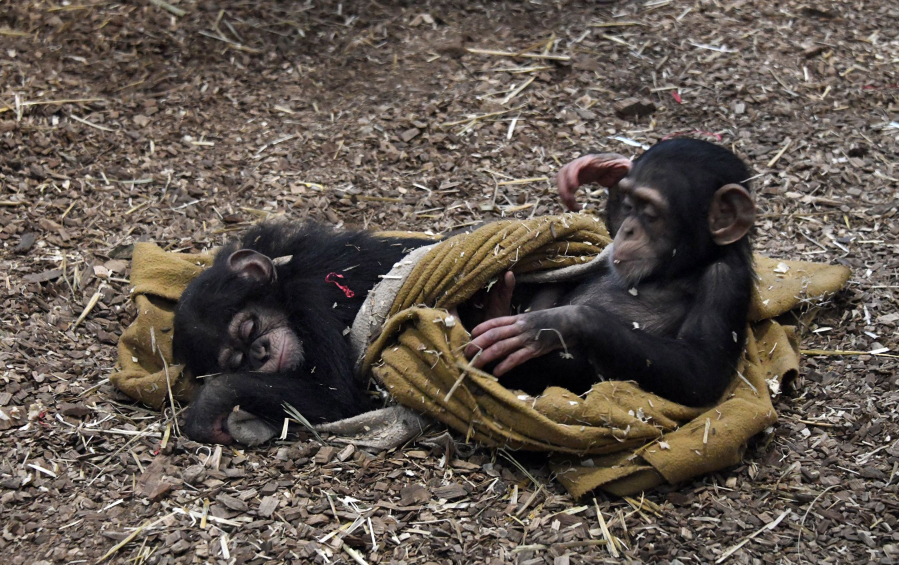Not long ago, comparative psychologist Christopher Krupenye and a colleague visited the Leipzig Zoo in Germany, where both had worked on a research project several years before.
The 145-year-old zoo gets roughly 2 million visitors per year, and its bonobos are used to a parade of human faces passing their enclosure. But as Krupenye and his colleague approached, a male named Jasongo appeared to recognize them from a distance. He came bounding over, his jaw extended in the open-mouthed facial expression bonobos make at play, emitting the laughter-like sounds of a happy ape.
“When you return, it really seems like they really remember you,” said Krupenye, an assistant professor of psychological and brain sciences at Johns Hopkins University. “They’re experiencing dozens or hundreds of unfamiliar zoo guests every day who they largely ignore, and when you show up they come over and respond to their name.”
For humans, memory is essential to maintaining our complex web of social relationships. We have to remember who is a friend and who is a foe, who can be counted on for loyalty and who royally screwed you over during the last struggle for dominance.
Bonobos and chimpanzees, our closest living relatives, maintain similar social dynamics. Like us, they live in what scientists call “fission-fusion” societies, meaning they frequently split up to collect food and other resources before joining up again.
We shared a common ancestor roughly 5 million to 7 million years ago, a heartbeat in evolutionary time. Our genomes are about 99 percent identical.
Given these similarities, researchers have long suspected that chimps and bonobos have a robust capacity for social memory just as humans do. But unlike battles between rivals or grooming behaviors among friends, it’s hard to observe the act of an ape’s remembering.
“They have long-lasting social relationships that are really important for their survival and well-being,” said Laura Simone Lewis, a biological anthropologist and comparative psychologist who is a postdoctoral fellow at the University of California, Berkeley. “It would make sense that they then have capacities to foster and maintain these social relationships for decades as well. We think that one capacity that helps them with that is being able to remember individuals.”
Lewis, Krupenye and their colleagues set out to record evidence of social memory in nonhuman primates. They used the same tool scientists employ as a proxy for attention in human studies: eye tracking.
Sure enough, they found that the apes spent significantly more time studying images of former groupmates compared with photos of strangers. When presented with a picture of an individual they had shared a positive relationship with, they lingered even longer.
“Chimpanzees and bonobos were looking longer at the images of their previous groupmates with whom they had these more positive social relationships, or something like you might call their friends,” Lewis said.
The researchers looked at four populations of apes in three different sites: chimpanzees at Scotland’s Edinburgh Zoo, bonobos at Planckendael Zoo in Belgium, and chimps and bonobos at Kumamoto Sanctuary in Japan.
Participation in the study was entirely voluntary: Researchers showed the images only to animals who chose to wander over to the research area attached to their enclosure.
To entice potential research subjects, the scientists offered an enticement that has reliably worked among Homo sapiens: free drinks. A window in the research area was fitted with a nozzle that dispensed a tasty juice to any animal who came by for a sip.
In addition to attracting study subjects, the nozzle kept animals’ heads in a steady, forward-facing position. Researchers then showed the animals a screen with two side-by-side photos: one a former groupmate, and one an unknown ape of the same sex and approximate age. Three such pairs of photos flashed in sequence for three seconds each, each with a once-familiar face next to that of a stranger.
The study team then tracked the animals’ eye movements to precisely measure the amount of time they spent looking at each image, using technology previously deployed in human studies.
“Their eyes are so similar to ours that you can actually use the exact same machines,” Lewis said.
The 26 apes who participated in the study saw 16 to 32 pairs of images each. On average, they looked 14 percent longer at the animals they once knew, the researchers reported Monday in the Proceedings of the National Academy of Sciences.
The authors expected the quality of the chimps’ and bonobos’ memories would degrade over time, but that wasn’t the case. The apes’ focus on former groupmates was equally intent if they had been separated for two years or 10.
The study also documented the longest memory so far recorded in a nonhuman animal.
Louise is a bonobo at Kumamoto Sanctuary who had been transferred there 26 years earlier from the San Diego Zoo. (Members of captive ape populations are often moved to new facilities to prevent inbreeding and to mimic social patterns in the wild, Lewis said.)
On eight separate occasions, Louise was presented with images of her sister Loretta or nephew Erin. Each time she stared at her relatives for significantly longer than the average look of recognition.



